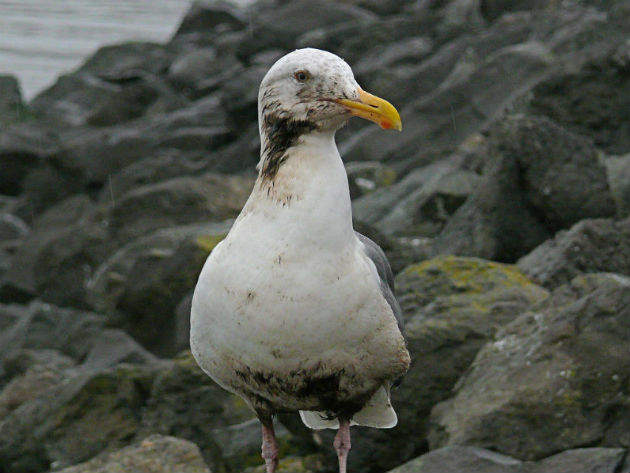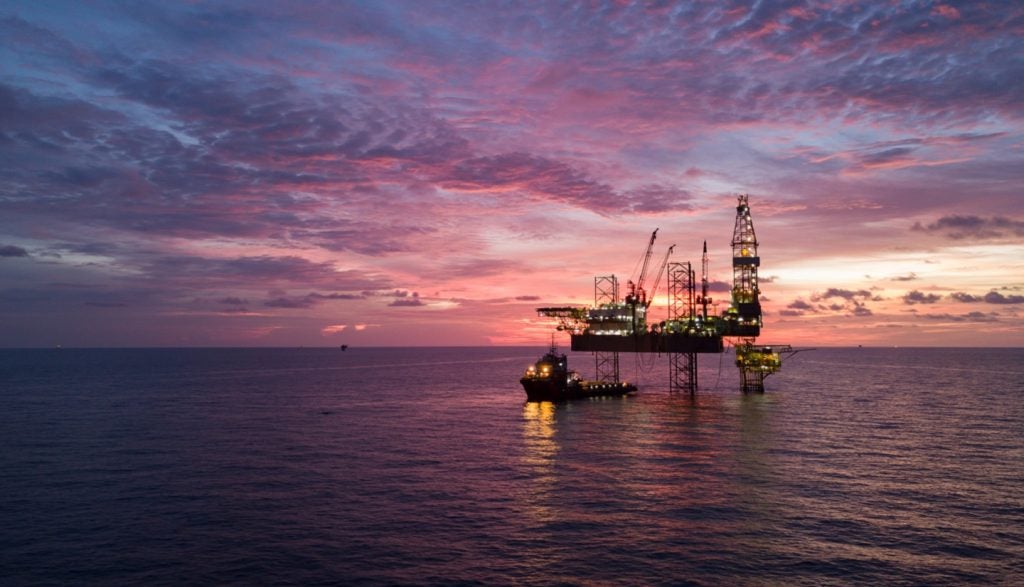

Chronic pollution from many small oil spills may have similar or even greater population level impacts on seabirds than a single large spill. Gail Fraser, associate professor at York University in Toronto has been looking into what companies do when small spills occur in the offshore Newfoundland and Labrador. In 220 oil spill cases, over a 13 year period, just 11 reported on presence or absence of seabirds. Fraser talks about why this is an issue that needs addressing and what can be done to change big oil’s attitude.
Lindsay Dodgson: What’s your area of focus with this new research?
Gail Fraser: Seabird conservation is the underlying driver of the research. I am interested in understanding how are seabirds impacted by the offshore oil and gas industry. The Grand Banks off Newfoundland has high seabird diversity and abundance, thus I had an interest in how seabirds were intersecting with the offshore oil industry. Within this broad framework, I have identified several sub-questions primarily using environmental assessments as a way to frame these questions. Environmental assessments examine how the various components of offshore oil development may impact the marine environment. In offshore Newfoundland seabirds were identified as most at risk from oil pollution in particular.
LD: How did you conduct this research?
GF: Several steps were involved. With a focus on seabirds and chronic oil pollution, I first examined the reviews/comments submitted by a federal agency with expertise in seabird, Environment Canada, in the environmental assessments for three offshore oil projects 1985, 1997 and 2001. Environment Canada expressed concern in all of three assessments about chronic oil pollution from small oil spills.
In order to find out if the concerns had been addressed I placed an Access to Information Request for the spill reports from offshore operators, focusing on the production projects that underwent the environmental assessments reviewed. The information request is required, because the details of the reports are not publicly available.
How well do you really know your competitors?
Access the most comprehensive Company Profiles on the market, powered by GlobalData. Save hours of research. Gain competitive edge.

Thank you!
Your download email will arrive shortly
Not ready to buy yet? Download a free sample
We are confident about the unique quality of our Company Profiles. However, we want you to make the most beneficial decision for your business, so we offer a free sample that you can download by submitting the below form
By GlobalDataSee Also:
It is worth noting here that in Canada offshore oil is regulated by a joint federal-provincial board which is arm’s length from government. It was created through joint legislation the Canada-Newfoundland and Labrador Atlantic Accord Act. I mention this act because there is a section which allows the operators to determine what data they choose to publicly disclose. I was actually surprised that I got the spill report data. So even though the regulator might have those data, they have to ask the oil company, permission to release it. I asked for similar data in 2004 when I first started this research and was denied that information.
Once the spill reports were received we queried the dataset to determine if seabirds were being monitored during small spills (< 50 barrels). We took into consideration time of day and visibility and asked of the number of spills that occurred during the day and with good visibility, it is a foggy place, how many had observations on seabirds. With the additional consideration of wave height, we also asked how many spills did the operators attempt containment.
LD: What did you find out?
GF: There were 220 daytime spills with good visibility. Of these, we found that there was very little mention, only 11 spills, of seabirds, either their presence or absence. The spills were over a 13 year period, so this was ample time for the operators to get a protocol established for spill reporting. They were not including seabirds in their observations during a spill. And containment was attempted for a small proportion of the spills.
LD: Were the oil companies ignoring a legal requirement?
GF: It's a bit murky whether it’s actually a legal requirement. Each operator has an oil spill response plan. During the Gulf of Mexico Macondo Well blowout, the offshore regulator for the industry in Newfoundland and Labrador announced that they would make the spill response plans available – upon request; but the plans are not on the internet. When starting the research on the response to small spills I thought the best approach would be to examine individual spill response plans and compare each plan to the on-the-ground actions for each operator. However, the spill response plans are not really publicly available. When I asked the regulator if the plans were protected under the legislation I mentioned, the answer was yes.
So the projects were reviewed in a public environmental assessment process, but the spill response plans were approved later by the regulator. I think that the spill response plans do not reflect the concerns in the environmental assessments with respect to seabirds and chronic oil pollution. But without full transparency it's complicated and never an easy story.
LD: What is it about small oil spills that are so dangerous for seabirds?
GF: Seabirds are attracted to platforms via the structure and through light. Once attracted to the area, they have an increased probability of being exposed oil, to what you would think would be a pretty small spill. Even a 15 litre spill could spread a long way on the surface to expose birds. The Northwest Atlantic waters are cold, birds exposed to a very small amount of oil can die from hypothermia, it’s a hole in the wetsuit phenomenon. At night birds can also be killed by hitting the platforms or flying into the flares because they become disoriented from the light.
Seabird mortality is a concern because of their life history traits. They have delayed reproduction, some species don't start breeding until they're three or four, sometimes even eight or nine years of age and have really low reproductive rates. They also live a long time, which means that their populations are sensitive to adult mortality; adult mortality can cause a population to decline. Oil doesn't distinguish between non-breeding adults and other adults, and relatively small proportion of adult mortality can cause populations to decline. Because of delayed reproduction, it may take time detect the decline. By which time it's a huge problem and you're spending a lot of money trying to do conservation work and trying to regrow a population.
It is important to understand the various sources of mortality, including those from offshore oil operations. Seabird populations around the world are declining, and it's due to a whole host of drivers. From our study, unfortunately, we cannot determine how many birds may have been killed from the series of small spills. That was why Environment Canada wanted that information in the environmental assessments; they wanted to understand if chronic oil pollution is a significant contributing factor to seabird mortality for the region.
LD: So could this be happening all over the world?
GF: Offshore oil operations and seabirds intersect all around the world, there are certainly hotspots, Newfoundland and Labrador is one of them. We argue that independent observers should be on board these platforms collecting data. They can collect data on the oil spill itself, on the interactions of seabirds with oil spills, and on light pollution. This is not a new system, the fishing industry have trained independent observers, I was one myself years ago, who assess the catch size, estimate bycatch etc; and oil platforms should have the same.
LD: What are your next steps?
GF: This is one of three papers where we're recommending independent observers. The regulatory system is complex since the regulator is arms-length changes require convincing both government and the regulator. I have been working on offshore oil management questions for over a decade. I take one step at a time and I think of the research as a cumulative picture of how the industry is managed in Newfoundland. I hope with enough evidence, the regulator will adopt measures which increase measures that further seabird conservation; I'm providing them with information to make rational decisions based on evidence.





